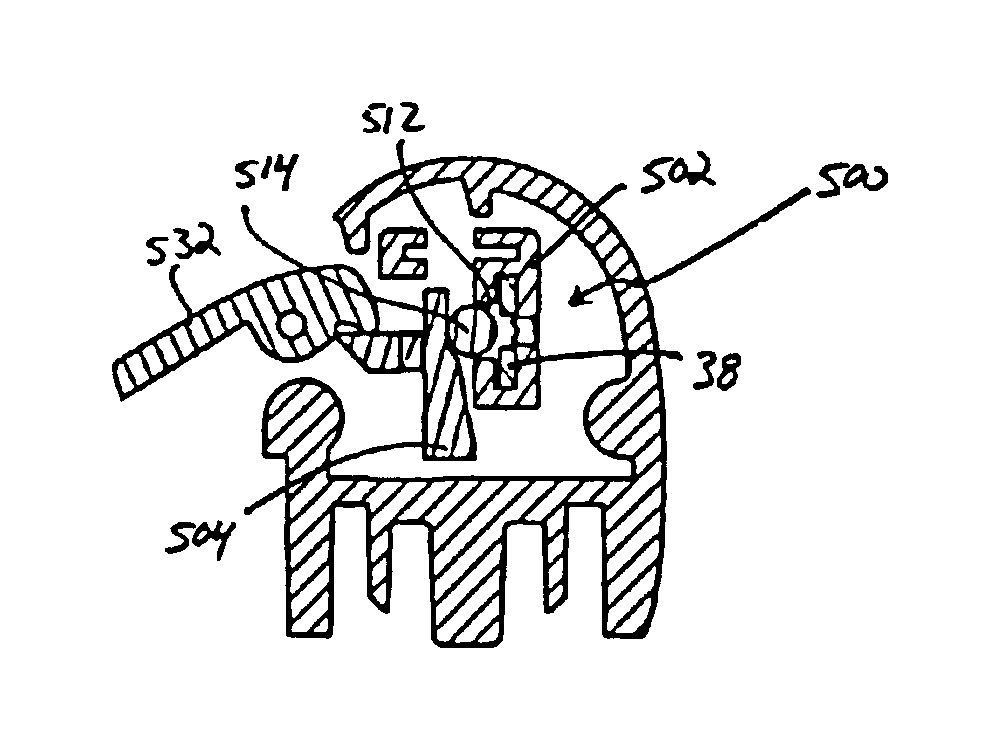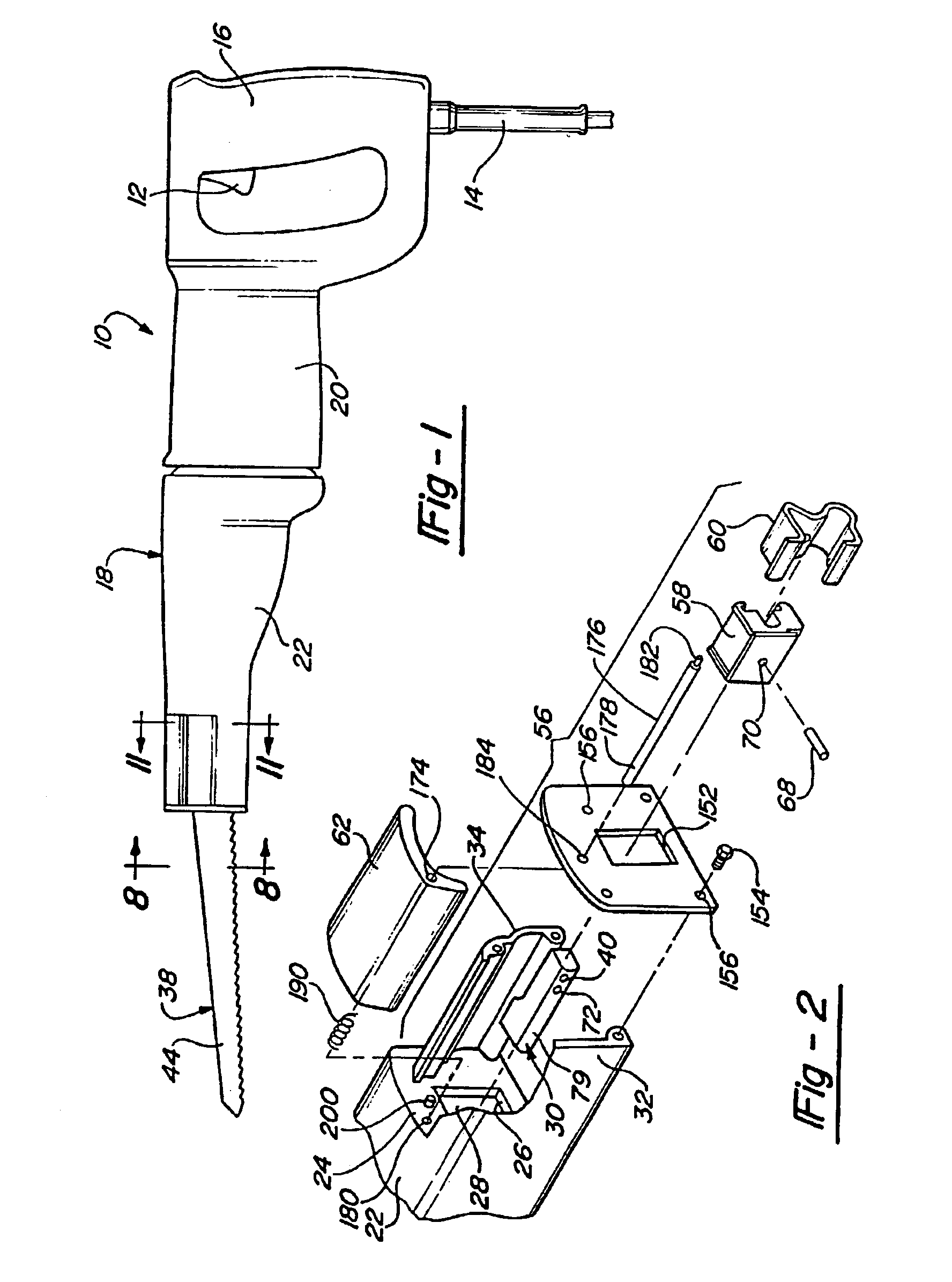Clamping arrangement for receiving a saw blade
a technology for clamping arrangements and saw blades, which is applied in the field of power tools, can solve the problems of loosing the set screw, inability to quickly and easily remove saw blades which become worn or fractured, and inability to quickly and easily install and remove saw blades. the effect of quick and easy installation and removal of saw blades
- Summary
- Abstract
- Description
- Claims
- Application Information
AI Technical Summary
Benefits of technology
Problems solved by technology
Method used
Image
Examples
first embodiment
[0104]Turning now to FIGS. 20-31 of the drawings, a saw blade clamping arrangement 56″ constructed in accordance with the third preferred embodiment of the present invention will now be described. Again, components similar to those identified with respect to the first embodiment will be designated in the drawings with corresponding reference numerals. As with the first and second preferred embodiments, saw blade clamping arrangement 56″ is operative for use with power tool 10 such as reciprocating saw or other tool including a reciprocating drive shaft 30.
[0105]As with the first preferred embodiment of the present invention, saw blade clamping arrangement 56″ of the third preferred embodiment includes a support member 58, a biasing member 60 and an actuation member 62. Saw blade clamping arrangement 56″ of the third preferred embodiment departs from the first preferred embodiment in that it additionally incorporates a locking member 310 operatively interconnect saw blade 38 to drive...
third embodiment
[0131]As with the prior embodiments, the clamping arrangement 500 includes a release lever 532 which functions to translate the slider 504 from the first position to the second position. In a normal position (as shown in FIG. 41), the release lever 532 is spaced apart from a flange 536 of the slider 504. It will be appreciated that the release lever 532 does not reciprocate with the drive shaft 30 of the tool 10. The release lever 532 is movable (i.e., rotatable) to a second position (as shown in FIG. 48). In this second position, the release lever 130 displaces the slider 504 downward to its second position and thereby permits removal and replacement of the saw blade 38 in the manner discussed above. The slider 504 is biased upward (as shown in FIGS. 47 and 49) to its first position by a biasing member 538 (shown in FIG. 43B). The biasing member 538 is preferably a spring 538. A spring identical in construction and function is shown in FIG. 23 in connection with the present inventi...
PUM
| Property | Measurement | Unit |
|---|---|---|
| displacement | aaaaa | aaaaa |
| vibration forces | aaaaa | aaaaa |
| thickness | aaaaa | aaaaa |
Abstract
Description
Claims
Application Information
 Login to View More
Login to View More - R&D
- Intellectual Property
- Life Sciences
- Materials
- Tech Scout
- Unparalleled Data Quality
- Higher Quality Content
- 60% Fewer Hallucinations
Browse by: Latest US Patents, China's latest patents, Technical Efficacy Thesaurus, Application Domain, Technology Topic, Popular Technical Reports.
© 2025 PatSnap. All rights reserved.Legal|Privacy policy|Modern Slavery Act Transparency Statement|Sitemap|About US| Contact US: help@patsnap.com



